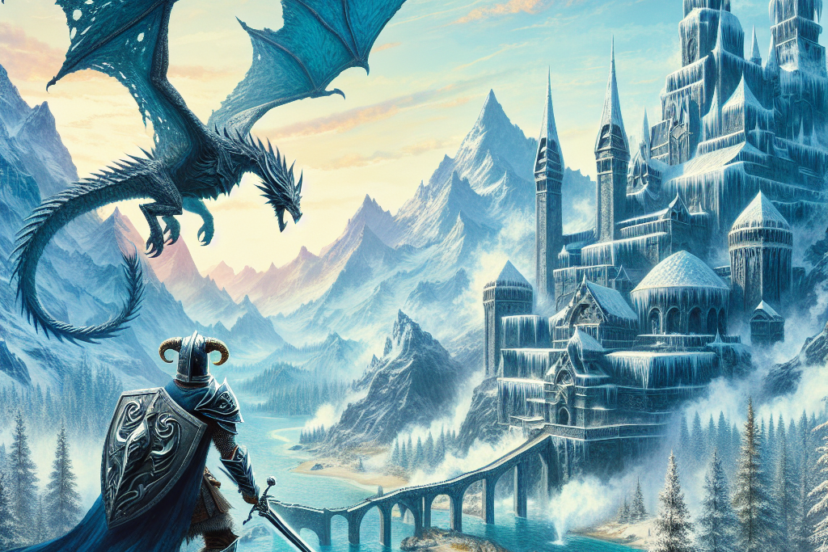From Pixelated Characters to Immersive Worlds: The Journey of Gaming
From Pixels to Polygons: The Dawn of Gaming
The Birth of Video Games
In the early 1970s, the first electronic games began to emerge, with space invaders and Pong leading the charge. These early creations featured simple black-and-white graphics and basic sounds, yet they laid the foundation for recreational electronic gaming. Picture a rectangular paddle moving back and forth as a square ball zooms across your screen – enthusiasts were captivated by the novelty.
The Age of 8-Bit Glory
As we moved into the 1980s, game developers started to embrace color, bringing a new life to gaming. The Nintendo Entertainment System launched in 1985, showcasing vibrant 8-bit graphics. Characters like Mario and Link captured players’ hearts, introducing narratives that encouraged players to embark on adventurous quests. The notion of storytelling became a crucial element, intertwining with gameplay and drawing players into fantastical realms.
Classic Characters and Their Impact
Characters from this era became iconic, establishing a strong connection with audiences. Mario, with his plucky persona, represented the everyman hero, while games like The Legend of Zelda introduced players to immersive stories with open-world exploration. Each pixelated character became part of a larger tapestry of gaming culture; people wore T-shirts adorned with their favorite heroes, and fan art thrived in various creative communities.
The Revolution of 16-Bit Graphics
The Rise of RPGs and Side-Scrolling Fun
The 1990s marked the transition from 8-bit graphics to 16-bit, allowing for a greater range of colors and more detailed pixel art. This era exemplified the rise of role-playing games (RPGs) with titles like Final Fantasy and Chrono Trigger capturing gamers’ imaginations. The detailed storytelling, rich character development, and immersive worlds transported players to magical realms.
The Influence of the Internet
With the arrival of the internet, gaming transformed yet again. Players could now connect, compete, and collaborate with others from around the globe. This brought about online multiplayer gaming and significantly expanded the potential for immersive worlds through massive multiplayer online games (MMOs) like EverQuest and World of Warcraft. These experiences showcased not just pixelated characters, but entire digital communities where players could forge their own identities.
Not Just for Kids Anymore
Games started to attract a broad range of audiences. Parents were playing alongside their children, and gaming began to gain traction as a legitimate form of entertainment for all age groups. The storytelling elements became richer and more complex, catering to both younger gamers and adults seeking engaging narratives.
3D Graphics: Entering a New Dimension
The Shift to 3D Worlds
The mid-1990s introduced 3D graphics that revolutionized the gaming landscape. With the advent of powerful gaming consoles, such as the Sony PlayStation, titles like Final Fantasy VII market-shift the industry entirely. Gone were the days of side-scrolling; players could now roam through lush, fully-realized worlds.
Iconic Titles and Their Innovations
Legendary games like Super Mario 64 and The Legend of Zelda: Ocarina of Time pushed the boundaries of what players could expect from a gaming experience. They introduced seamless open worlds, expansive storytelling, and puzzle-solving mechanics that required critical thinking. Players were no longer just winning levels – they were immersed in a living world with characters and landscapes that felt real.
The Growth of Graphics Engines
As technology advanced, graphics engines like Unreal Engine and CryEngine emerged, enabling even more sophisticated visuals. Developers had powerful tools at their disposal that allowed for intricate textures, realistic lighting, and lifelike animations. This was a leap towards creating visually captivating worlds that blurred the lines between the digital and real experiences.
Mapping Emotions and Enhancing Interaction
From Gameplay to Emotional Connection
With enhanced graphics came deeper emotional storytelling. Games like The Last of Us and Red Dead Redemption 2 transformed the industry by presenting players with complex characters and narratives that tugged at the heartstrings. Gamers began to experience nuanced stories, engaging with themes of love, loss, and moral dilemmas as they made choices within the game, allowing for a deeper emotional investment.
The Role of Voice Acting and Motion Capture
The introduction of professional voice acting and motion capture technology added life to characters, giving them unique personalities and traits. These advancements provided a more immersive experience, making players feel as though they were part of a cinematic narrative rather than just players on a screen. Iconic performances by actors have since changed how players perceived and connected with characters, further intertwining narratives with gameplay.
Virtual Reality: A New Frontier
The Advent of VR Gaming
Fast forward to the present, and technology has once again taken a monumental leap forward. Virtual Reality (VR) has emerged, offering players immersive experiences like never before. With devices like the Oculus Rift and HTC Vive, gamers can step inside the worlds they’ve only navigated from a distance.
The Dynamics of Interaction
In VR, players can physically interact with characters and environments, which fosters an entirely new level of engagement. Imagine donning a VR headset and swinging a sword in a fantasy realm or solving puzzles in a mysterious environment where every action feels real – that’s the potential of VR gaming. It’s not merely a visual experience but one that heightens all senses and provides a sense of agency that traditional gaming interfaces might not convey.
The Growth of Augmented Reality
Simultaneously, Augmented Reality (AR) has captured interest with games like Pokémon GO, allowing players to encounter virtual elements in the real world. This blend of reality and fantasy broadens the horizons of gameplay, connecting players with their surroundings and fostering social interaction. As players searched for Pokémon in parks and urban areas, the game created a unique connection between communities, blending the digital with the physical world.
Social Gaming and the Digital Community
Creating Connection Through Multiplayer Experiences
With the growth of online gaming, social dynamics dramatically evolved. Players were no longer solitary beings within their living rooms; instead, they formed friendships online, joined guilds, and collaborated in both cooperative and competitive environments. Games like Fortnite and Among Us exemplify this social interaction, bringing players together for shared experiences that transcend geographical barriers.
Streaming and Influencer Culture
The rise of platforms like Twitch and YouTube has also transformed the gaming landscape. Content creators showcase their gaming experiences, enabling viewers to participate in the excitement vicariously. This new form of social gaming fosters community engagement, allowing fans to support their favorite streamers and share in the adventures and challenges presented on-screen.
The Future of Gaming: AI and Beyond
Artificial Intelligence in Gaming
As technical innovation continues, Artificial Intelligence (AI) is becoming a critical component of gaming. AI is being used to create more dynamic and responsive NPCs (non-player characters), crafting experiences that feel less scripted and more organic. This adaptability allows for varied player interactions and challenges, enhancing the overall experience.
Limitless Possibilities with Procedural Generation
Procedural generation is another exciting aspect of modern gaming. Games like No Man’s Sky use this concept to create vast universes filled with unique landscapes and life forms, ensuring that each player’s experience is unique. This tech can lead to infinite possibilities, challenging notions of linear gameplay and storylines.
The Role of Player Feedback
Today, developers actively seek player feedback, fine-tuning games based on community input. This interaction between creators and gamers has transformed the development process, making it more collaborative and responsive. As companies champion transparency and adaptability, the gaming experience becomes increasingly player-focused, shaping the future of the industry.
Embracing Diversity in Gaming
Expanding Representation
Gaming is becoming more inclusive, with greater representation of diverse voices and stories. Games like Life is Strange and Celeste highlight the experiences of marginalized communities, allowing players to explore narratives that reflect a wider array of experiences. This growing emphasis on representation fosters empathy and broadens the understanding of different cultures and perspectives.
Empowering Female Characters
Additionally, the portrayal of female characters has evolved, transitioning from stereotypical depictions to complex, multi-dimensional figures. Titles like Horizon Zero Dawn and Tomb Raider feature strong female leads who possess depth, agency, and compelling stories. This shift not only enriches gameplay but empowers younger players to see themselves reflected in the characters they encounter.
The Evolving Ecosystem of Gaming
Mobile Gaming and Accessibility
With the rise of smartphones, gaming has become more accessible than ever. Mobile games span genres, ensuring that anyone can find something to enjoy. This surge democratizes gaming, allowing players from various backgrounds and with different devices to enjoy immersive experiences without needing a high-end console or gaming PC.
Expanding the Player Base
As gaming technology flows into daily life, the player base continues to expand. More people than ever are engaging with games for relaxation, socialization, and even educational purposes. Board games are being digitized, classic titles re-imagined, and new content allows for unlimited exploration of different interests, turning gaming into an even more pervasive aspect of contemporary culture.
From pixelated characters to immersive worlds – the journey of gaming is a testament to human creativity, technological advancement, and community connection. As we look ahead, a world of innovative possibilities awaits, encouraging everyone to play, explore, and experience gaming like never before.




